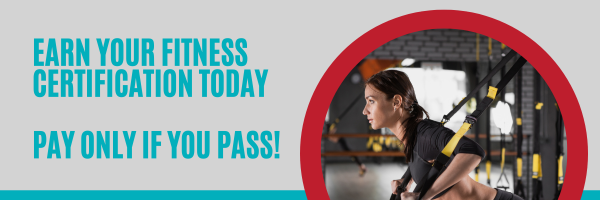Functional fitness is a popular and effective fitness program that combines high-intensity functional movements with strength training and cardiovascular exercises. It is designed to improve overall fitness by targeting various aspects of physical performance, including strength, endurance, agility, speed, and flexibility. In this blog post, we will discuss how to incorporate Functional fitness into your workouts and provide tips on how to get started, train safely, and make the most of your Functional fitness experience.
Understand the Fundamentals of Functional Fitness
Before incorporating functional fitness into your workouts, it's essential to understand its basic principles and structure. Functional fitness workouts, also known as "WODs" (Workout of the Day), typically consist of a series of functional movements performed at high intensity. These workouts often include a combination of:
- Weightlifting exercises, such as squats, deadlifts, and presses
- Gymnastic movements, like pull-ups, push-ups, and handstand walks
- Cardiovascular exercises, such as running, rowing, and jumping rope
Find a Functional Fitness Gym or Online Resources
To get started with functional fitness, consider joining a local functional fitness gym, where you can receive guidance from certified coaches and participate in group classes. If you prefer to train on your own or do not have access to a functional fitness gym, you can also find a wealth of resources online, including instructional videos, workout ideas, and programming templates.
Start with a Functional Fitness Fundamentals Course or On-Ramp Program
If you're new to functional fitness, it's essential to learn the proper technique for various exercises and movements before jumping into full-scale workouts. Many functional fitness affiliates offer a fundamentals course or on-ramp program designed to teach beginners the basics of functional fitness, including proper form, exercise progressions, and workout structure. These introductory programs can help you build a solid foundation and ensure you train safely and effectively.
Scale and Modify Workouts to Suit Your Fitness Level
One of the key principles of functional fitness is scalability, meaning that workouts can be adapted to suit individuals of all fitness levels and abilities. As you incorporate functional fitness into your workouts, be sure to scale exercises and workout intensity to match your current fitness level, experience, and any physical limitations. Modifications can include using lighter weights, performing fewer repetitions, or substituting exercises with more accessible alternatives.
Prioritize Proper Form and Technique
To minimize the risk of injury and maximize the effectiveness of your workouts, it's crucial to prioritize proper form and technique during functional fitness exercises. Pay close attention to your body's alignment and movement patterns, and don't be afraid to ask for guidance from a coach or experienced functional fitness practitioner if you're unsure about your form. Remember that it's better to perform an exercise with perfect form at a lower intensity than to sacrifice technique for the sake of speed or weight.
Incorporate Functional Fitness Workouts into Your Weekly Routine
Functional fitness can be a valuable addition to your existing fitness routine, providing variety and challenging your body in new ways. Aim to incorporate functional fitness workouts into your weekly schedule, while still allowing time for rest and recovery. As a general guideline, consider including 2-4 Functional fitness workouts per week, depending on your current fitness level and goals.
Listen to Your Body and Allow for Adequate Recovery
Functional fitness workouts can be physically demanding, so it's crucial to listen to your body and allow for adequate rest and recovery. Be mindful of any pain or discomfort during or after your workouts and adjust your training accordingly to prevent overtraining or injury. Incorporate rest days, active recovery sessions, and mobility exercises into your routine to support your body's recovery and overall well-being.
Focus on Nutrition and Hydration
Proper nutrition and hydration are essential for fueling your functional fitness workouts and supporting recovery. Focus on consuming a balanced diet rich in whole foods, including lean proteins, complex carbohydrates, healthy fats, and a variety of fruits and vegetables. Additionally, ensure you stay adequately hydrated before, during, and after your workouts to maintain optimal performance and prevent dehydration.
Set Realistic Goals and Track Your Progress
As you incorporate functional fitness into your workouts, set realistic and attainable goals to stay motivated and monitor your progress. These goals might include improving specific skills, increasing strength or endurance, or achieving a personal best in a particular workout. Regularly assess your progress and celebrate your achievements, no matter how small they may seem.
Embrace the Functional Fitness Community
One of the unique aspects of functional fitness is the strong sense of community and camaraderie that exists among its participants. Whether you train at a functional fitness affiliate or follow workouts online, consider connecting with other functional fitness enthusiasts to share experiences, support one another, and stay motivated. Engaging with the functional fitness community can provide valuable insights, encouragement, and accountability as you work towards your fitness goals.
Conclusion
Incorporating functional fitness into your workouts can be a highly effective way to improve your overall fitness, challenge your body in new ways, and stay engaged with your training. By understanding the fundamentals of Functional fitness, seeking guidance from certified coaches or online resources, and scaling workouts to suit your fitness level, you can safely and effectively incorporate this powerful fitness program into your routine.
Remember to prioritize proper form and technique, listen to your body, and allow for adequate rest and recovery. Focus on proper nutrition and hydration, set realistic goals, and embrace the supportive functional fitness community as you work towards becoming fitter, stronger, and healthier. With dedication, persistence, and the right approach, functional fitness can be a transformative addition to your fitness journey.





